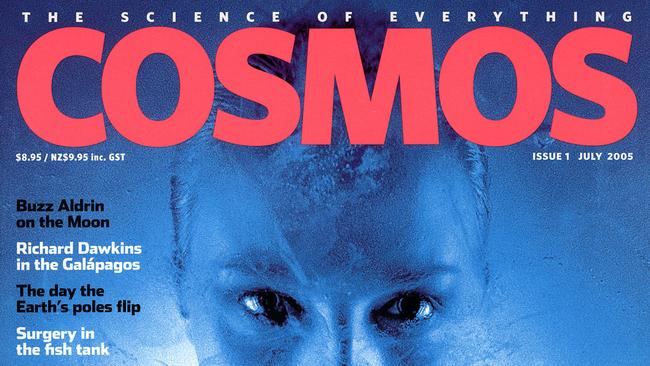CSIRO shuts science magazines Cosmos and Double Helix
Australia’s national science agency, the CSIRO, has announced the closure of two of its commercial magazines due to the ‘unsustainable’ costs of print production.

CSIRO Publishing, the national science agency’s editorially independent publishing arm, is closing its prestigious commercial magazine Cosmos – once dubbed the ‘New Yorker of science’ – due to the “unsustainable” costs of print production.
Cosmos, a popular quarterly publication that has covered global science issues since it was launched in 2005, will release its final print edition next month, before shifting to an online-only masthead, the publisher announced on Friday.
Its sister publication, Double Helix, which is aimed at the children’s market, will cease production altogether in June, after a 10-year run.
The move to shut Cosmos comes less than a year after CSIRO Publishing took on “custodianship” of the magazine from the previous publisher, the Royal Institution of Australia, with a view to “making science accessible for the Australian public”.
“Over the next year we will be exploring options for Cosmos with the aim of identifying a long-term sustainable business model that maximises the impact of the publication, making science accessible for the Australian public,” CSIRO’s science connect director Gail Fulton said in June last year.
But CSIRO Publishing announced on Friday it was no longer financially viable to produce and print the masthead.

“After a review of its magazine business, CSIRO Publishing … has made the difficult decision to stop the production of Double Helix and Cosmos magazines,” said a CSIRO Publishing spokesman.
“The broader shift by audiences away from print – seen across the magazine sector – has made the production of these magazines unsustainable.
“The online news service component of Cosmos will continue and be integrated into CSIRO Publishing’s new unique digital destination for science due to launch later in the year.”
Asked about the factors that contributed to the failure of the print magazines, the spokesman said: “CSIRO Publishing has considered various options to make Cosmos sustainable, including different subscription, advertising, promotion, and business models.
“Despite these efforts, subscriptions have continued to fall, making production of the magazine unsustainable.
“CSIRO Publishing’s digital content platform will continue to provide vital science information to the Australian public, supported by a dedicated team of journalists and commissioned contributions from Australia’s science journalists.
“The site will publish peer-reviewed journals, e-books and fact-based science news.”
The latest readership data, released by media industry body ThinkNewsBrands on Monday, reveals that Cosmos’s average monthly readership fell by 1.7 per cent over the past year to 113,000.
Last year, Cosmos drew industry criticism after it pursued an “experimental project” that resulted in the publication of articles generated by AI.
The AI service relied on content from contributors who were not consulted about the use of their work.
The project was the result of a 2023 grant from the Meta Australian News Fund, which was administered by the Walkley Foundation.






To join the conversation, please log in. Don't have an account? Register
Join the conversation, you are commenting as Logout